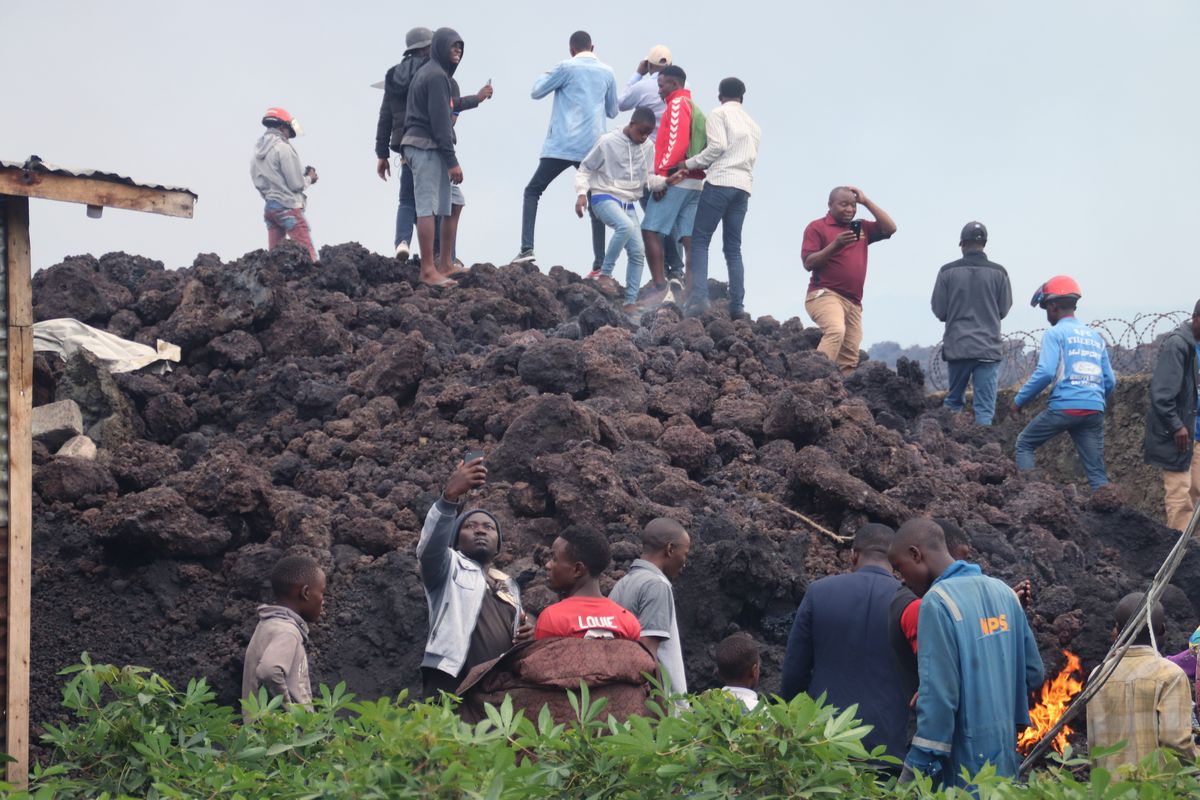Lava from Congo’s volcano eruption emits toxic gas, 7 dead

KINSHASA, Congo — Seven more people have died as a result of the recent volcano eruption in eastern Congo, increasing the death toll to 22.
Those killed Monday died from inhaling toxic gas when they were walking across a wide expanse of the cooling lava near the eastern city of Goma, the scientific director of the Volcanic Observatory of Goma, Celestin Kasereka Mahinda, told The Associated Press.
They were traveling on the road between Kibati and Goma that was cut off by a flow of lava 1,000 meters wide, he said.
“The population of Goma must avoid unnecessary travel, but also not visit places that have been hit by lava from the volcano because these lavas are toxic and harmful,” he said.
With little warning Mount Nyiragongo turned the dark sky fiery red on Saturday night and then spewed torrents of lava into villages, killing at least 15 people and destroying more than 500 homes, officials and survivors said.
On Monday residents searched for missing loved ones amid their destroyed homes on the outskirts of Goma, where light aftershocks were detected following the weekend eruption. Fumes rose from the cooling lava that covered part of the Nyiragongo region.
Grief, disbelief and fear hung over the area as a delegation of government ministers, including Congo’s health minister, visited Goma after flying in from neighboring Rwanda.
Scientists at the volcano observatory weren’t able to adequately warn the public of the eruption because of a funding cut, Mahinda said.
“The observatory no longer has the support of the central government or of external donors, which explains why the volcanic eruption was such a surprise,” Mahinda told The Associated Press. A partnership between the government and the World Bank that had supported the observatory was cut in October 2020 because of the coronavirus pandemic, leaving the observatory without even internet, he said.
The observatory had just started to resume operations last month thanks to new funding from the U.S. Geological Survey’s Volcano Disaster Assistance Program, which means the observatory can at least gather data after the eruption, he said.
The volcano remains active and earthquake tremors are being recorded, he said, calling on the population to remain vigilant.
The government ministers visiting Goma Monday were assessing what aid is needed for those hurt by the eruption.
“The government team dispatched expressly here in Goma, following the volcanic eruption which caused a lot of damage in the city,” Minister of Public Health Jean-Jacques Mbungani said. “It is important that a strong signal from our government is given. We will have discussions with the military governor as well as with all the stakeholders so that we can identify avenues for quick solutions for the population.”
The military governor of North Kivu province, Lt. Gen. Constant Ndima called on the population of Goma not to send children to school. Goma’s international airport of Goma and the airport in Kavumu in South Kivu province were closed for security reasons, he said in a statement.
The volcano eruption caused about 5,000 people to flee from one neighborhood of Goma, a city of about 2 million people, across the nearby border into Rwanda. Another 25,000 others sought refuge to the northwest in Sake, the U.N. children’s agency said.
More than 170 children were still feared missing, and UNICEF officials said they were organizing transit centers to help unaccompanied children in the wake of the disaster as more than 150 children were reportedly separated from their families.
Goma ultimately was largely spared the mass destruction caused by Mt. Nyiragongo’s last eruption in 2002. Hundreds died then and more than 100,000 people were left homeless.
Goma is a regional hub for many humanitarian agencies as well as a U.N. peacekeeping mission. Much of surrounding eastern Congo is threatened by a multitude of armed groups vying for control of the region’s lucrative mineral resources.